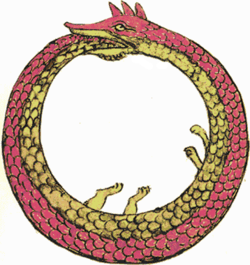Most participants of National Geographic’s Genographic Project can recite their haplogroup as readily as their mother’s maiden name. Yet outside consumer genetics, the word haplogroup is still unknown. Your haplogroup, or genetic branch of the human family tree, tells you about your deep ancestry—often thousands of years ago—and shows you the possible paths of migration taken by these ancient ancestors. Your haplogroup also places you within a community of relatives, some distant, with whom you unmistakably share an ancestor way back when.
Haplogroup H1, Genographic’s most common lineage.
Let’s focus here on mitochondrial DNA haplogroup is H1, as it is the Genographic Project’s most common maternal lineage result. You inherited your mitochondrial DNA purely from your mother, who inherited it from her mother, and her mother, and so on. Yet, unlike often is the case with a mother’s maiden name, her maternal haplogroup is passed down through generations. Today, all members of haplogroup H1 are direct descendants from the first H1 woman that lived thousands of years ago. Most H1 members may know their haplogroup as H1a or H1b2 or H1c1a, etc, yet as a single genetic branch, H1 accounts for 15% of Genographic participants. What’s more, in the past few years, anthropologists have discovered and named an astonishing 200 new branches within haplogroup H1; and that number continues to grow.
The origin of haplogroup H1 continues to be a debate as well. Most researchers suggest it was born in the Middle East between 10,000 and 15,000 years ago, and spread from there to Europe and North Africa. However, ancient DNA studies show that its ancestral haplogroup H first appears in Central Europe just 8,000 year ago. Its vast diversity and high concentration in Spain and Portugal, suggests H1 may have existed there during the last Ice Age, and spread north after glaciers melted. Yet others postulate that its young age and high frequency indicate it spread as agriculture took shape in Europe.
Any of the scenarios is possible. As technology improves, more DNA is extracted and sequenced from ancient bones, and more people contribute their DNA to the Genographic Project, we will keep learning about H1, and all other haplogroups. It is because of participants contributing their DNA, their stories, and their hypotheses to science that we can carry forward this exciting work uncovering our deep genetic connections.
Happy Haplogroups!
Haplogroup H1, Genographic’s most common lineage.
Let’s focus here on mitochondrial DNA haplogroup is H1, as it is the Genographic Project’s most common maternal lineage result. You inherited your mitochondrial DNA purely from your mother, who inherited it from her mother, and her mother, and so on. Yet, unlike often is the case with a mother’s maiden name, her maternal haplogroup is passed down through generations. Today, all members of haplogroup H1 are direct descendants from the first H1 woman that lived thousands of years ago. Most H1 members may know their haplogroup as H1a or H1b2 or H1c1a, etc, yet as a single genetic branch, H1 accounts for 15% of Genographic participants. What’s more, in the past few years, anthropologists have discovered and named an astonishing 200 new branches within haplogroup H1; and that number continues to grow.
The origin of haplogroup H1 continues to be a debate as well. Most researchers suggest it was born in the Middle East between 10,000 and 15,000 years ago, and spread from there to Europe and North Africa. However, ancient DNA studies show that its ancestral haplogroup H first appears in Central Europe just 8,000 year ago. Its vast diversity and high concentration in Spain and Portugal, suggests H1 may have existed there during the last Ice Age, and spread north after glaciers melted. Yet others postulate that its young age and high frequency indicate it spread as agriculture took shape in Europe.
Any of the scenarios is possible. As technology improves, more DNA is extracted and sequenced from ancient bones, and more people contribute their DNA to the Genographic Project, we will keep learning about H1, and all other haplogroups. It is because of participants contributing their DNA, their stories, and their hypotheses to science that we can carry forward this exciting work uncovering our deep genetic connections.
Happy Haplogroups!
